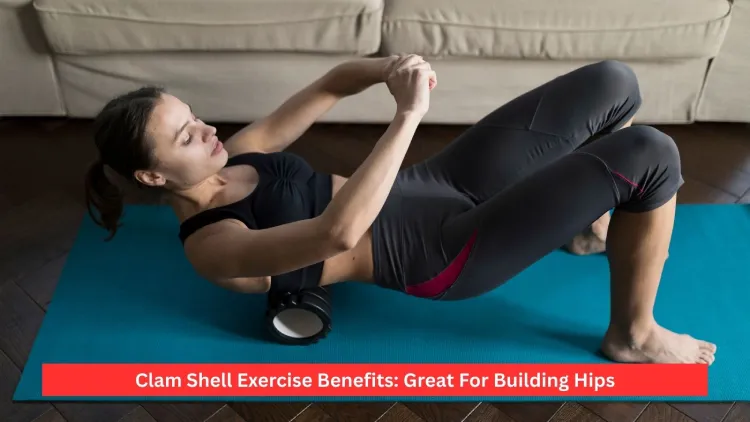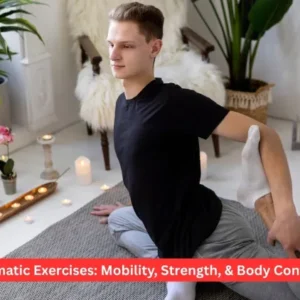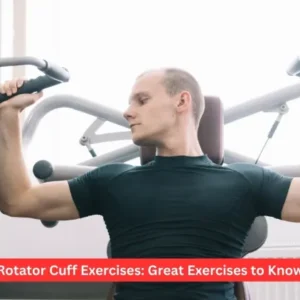The clam shell is a no-impact exercise that is utilised in physical therapy, athletic training, and exercises at home. The clam shell exercise benefits are: stronger hips, thighs, and centre, better pelvic posture, less knee pain, and better mechanics. Frequently exercising improves stability, the strength of weak muscles and reduces the chances of injury in athletes and in desk workers as well as adults.
- What Is the Clam Shell Exercise?
- Key Clam Shell Exercise Benefits
- How to Perform the Clam Shell Exercise
- Variations of the Clam Shell Exercise
- Common Mistakes to Avoid
- How Often and How Many Reps?
- What Muscles Are Used and What Results to Expect
- Case Study: Real-Life Results with the Clam Shell Exercise
- Additional Benefits and Fun Facts
- Clam Shells for Specific Goals
- How to Progress Over Time
- Why Consistency Matters
- Final Thoughts
- Frequently Asked Questions
What Is the Clam Shell Exercise?
The clam shell exercise resembles opening a clam shell: you lie on your side with bent knees, and pull off the top knee relative to the bottom knee, and your feet are together. The muscles between the gluteus medius and minimus, which stabilise during walking, running or climbing stairs, are isolated.
It is also referred to as a clam shell since the legs, like another shell, may open and close. It is a basic movement that features in Pilates, physical therapy, as well as functional fitness programs. Its performance needs minimal space or equipment, as many perform it even in beds or on a soft mat.
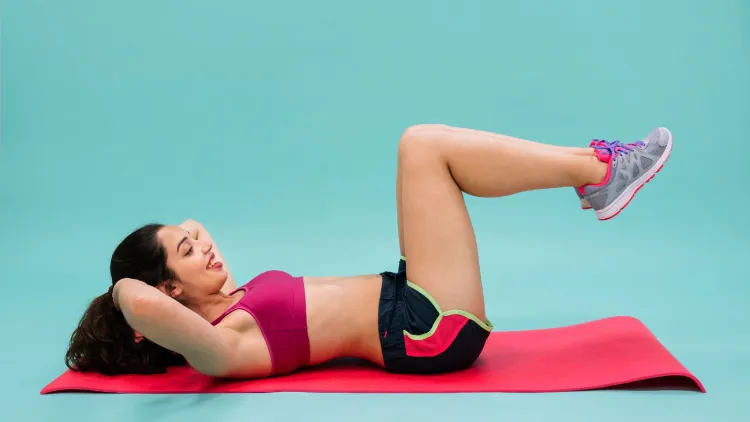
Key Clam Shell Exercise Benefits
1. Strengthens Hip Muscles
Among the clamshell exercise advantages, the stronger hip muscles are one of the most significant ones. Organisms activate the gluteus medius, the gluteus minimus and the hip outer rotators in this action. Well-integrated hips will enhance walking, running and balance, besides preventing the misalignment of knees.
2. Improves Pelvic Stability
The poor pelvic position and back strain may be caused by weak or strained hip muscles. Pelvic control is enhanced by the use of clam shells through the triggering action of deep stabilisers. This balance assists in your daily life when walking up or down the stairs or carrying your groceries, and minimises your chances of getting any injuries when playing a sport.
3. Also improves Performance in Sports.
Sports personalities depend on the lateral stability to make fast pivots, accelerate and decelerate. Doing clamshells regularly supports the strength one will require in soccer, basketball, running, cycling, and tennis. Movements were made powerfully and more efficiently when the hips were strong.
4. Reduces Risk of Injuries
Injury prevention is another exercise benefit of clam shells. Having poor glutes can be a contributing factor to IT band syndrome, pain in the knee and femur, hip bursitis, and even lower back pain. This activity helps to strengthen the underused muscles very often securing the joints and the connective tissue in times of high-impact activity.
5. Aids in Rehabilitation
Physical therapists have a common prescription of clam shells to help body parts like the hips, knees, and lower back recover from an injury. As the movement is not high intensity, and it is low impact, it enables the healing tissues to build up strength gradually without excessive overloading.
6. Corrects Muscle Imbalances
Prolonged sitting may cause weakening of the buttocks and straining of the hip flexors. This will result in bad posture and discomfort. Clam shell exercises performed regularly stimulate the sleeping muscles, bringing about balance and a self-enhanced posture.
7. Enhances Core and Lower Body Regulation.
Even though the main area of attack of clam shells is the hips, they also use your obliques and deep core muscles to hold the pelvis steady. This enhances coordination and increases lower-body alignment, which minimises compensatory practices during walking or running.
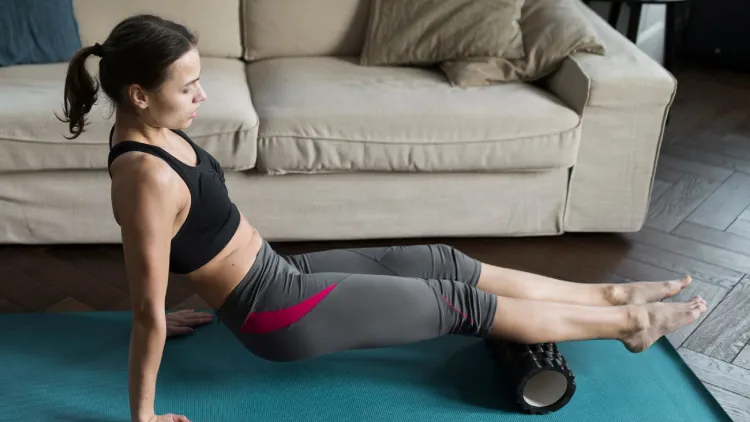
How to Perform the Clam Shell Exercise
- Lie on Your Side
Fold knees at approximately 45. - Engage Your Core
To stabilise the pelvis, tighten your abs. - Lift the Top Knee
Put your feet together and stretch slowly, raising your top knee with stacked hips. - Pause and Lower Slowly
Wait at the top for 1 or 2 seconds, then decrease. - Repeat 12–20 Times Per Side
Perform 2–3 sets on each side.
Hint: You can do clam shells on the mat, carpet or even on the bed. To make it even more difficult, put a small resistance band over your knees.
Variations of the Clam Shell Exercise
- Resistance Band Clam Shells: Tab this time, you ought to put a band looped on top to create more resistance.
- Side-Lying Hip Abduction with Extension: This lifts the top leg, extending more of the glute.
- Standing Clam Shells: Repeat this standing motion with a wall to help balance.
- Elevated Clam Shells: This will be done by placing the feet on a hold cushion or foam roller, which will help improve the range of motion.
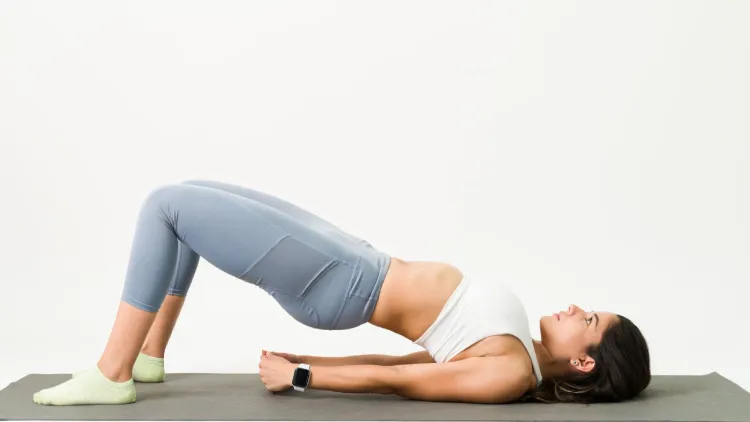
Common Mistakes to Avoid
- Turning the Hips in Reverse: Prefer to have the hips in line, twin on top of each other.
- Raising With Momentum: Raising things slowly makes sure that it is muscles and not momentum that does the lifting.
- Holding Your Breath: Breathe steadily to achieve core engagement.
- Don’t Go too Hard too Fast: Begin easy and move towards bands.
The way to know is to stop these errors so you can realise the full benefits of the exercise of the clam shell without hurting yourself or feeling uncomfortable.
How Often and How Many Reps?
An average individual will be able to perform 3-5 times a week clam shells that consist of 2-3 sets of 12-20 repetitions each side. You can be on rehabilitation; in that case, your physical therapist might advise you to practice daily. To strengthen in general, it is recommended to do clam shells every other day to enable muscles to rest and develop.
It is an exercise that is kind, so it is performed by many individuals daily, especially when they are dealing with hip or knee pain. With time, much practice brings about observable stability and muscle tone results.
What Muscles Are Used and What Results to Expect
The gluteus medius, gluteus minimus, and a variety of other hip external rotators are the target when using clam shells. The obliques and the pelvic stabilisers are secondary muscles. The outcome includes increased hip strength, balance and fewer headaches in the knees.
It takes a few weeks, and many individuals observe that their glutes are firmer and their hips more stable. Clam shells will not rapidly increase the size of the glutes, but because the core muscles begin supporting bigger, compound manoeuvres, such as squats or lunges.
Case Study: Real-Life Results with the Clam Shell Exercise
Sarah is a 34-year-old graphic artist with some problems in her knees and lower back rigidity due to excessive time in the desk chair. Her personal exercise habits changed after familiarisation with the exercise benefits of the clam shell, incorporating 3 sets of 15 reps on each of 4 days a week, with a light resistance band two weeks later.
In six weeks, she had:
- 70% less knee pain while jogging
- Greater resistance with stairs.
- Less stiffness of the back and better posture.
She had more defined glutes and was able to move on to heavier bands. Here, the urgency of this is demonstrated by how merely a steady, regimented routine applying the workout of the clam shell might alleviate pain, develop stability, and enhance daily movement, even though it might happen in a full plan.
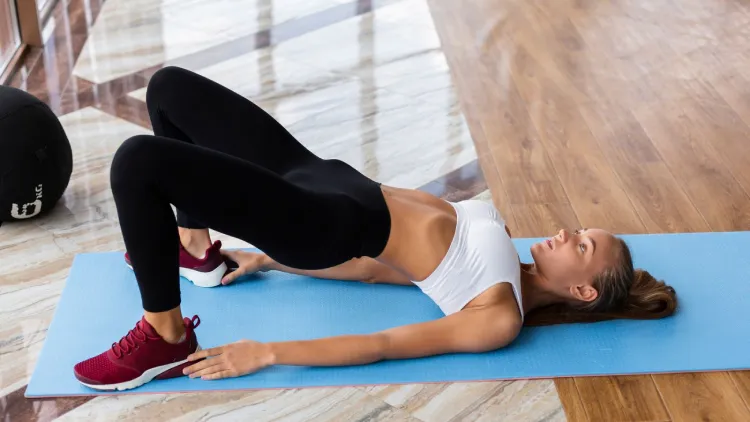
Additional Benefits and Fun Facts
- Aids bowing knee pain: Clam shells ease the strains on the knees by stabilising the hips.
- Strengthens the Pelvic Floor: When core muscles are contracted while executing clam shells, the student indirectly strengthens the pelvic floor.
- Burns Calories: High reps can burn low calories and enhance your body’s circulation, although not a high-intensity motion.
- Time Out Tight Hips: Stretching and strengthening the outer hips will relieve the stress of long sitting positions.
- Pilates Connection: The clam shell movement can be found in most Pilates classes as a hip stabilising exercise.
- Name Origin: It is so named after the rocking movement of a clam shell opening and closing, which represents the hip abduction.
Clam Shells for Specific Goals
- Lower Back Pain: These are strengthening the hip stabilisers, which help to protect the lower back.
- Engagement of inner thigh: With the addition of a squeeze ball between the knees or a band above the knees, one will recruit the inner thigh muscles.
- Knee: With stronger hips, the knee collapse inwards during walking or running becomes less likely.
- Pelvic Floor and Core Stability: Pelvic health is ensured by abdominal tension.
How to Progress Over Time
- Get Resistance: as you get used to it, use heavier bands.
- Reduce the Velocity: Spend more time on the peak to increase the tension over time.
- Workout with Other Glute Exercises: Bridges, hip thrusts, and squats are examples of exercises to supplement the use of Clam shells.
- Add Balance Work: Standing clamshells help increase functional stability of balance.
Why Consistency Matters
Basic Clam shells should be done periodically, not all the time. Not every day of your life should be in a boring routine because your hips and glutes get used to routines, they get stronger, and you develop a sense of coordination. This will alleviate knee pain, improve posture, and improve athletic performance over time.
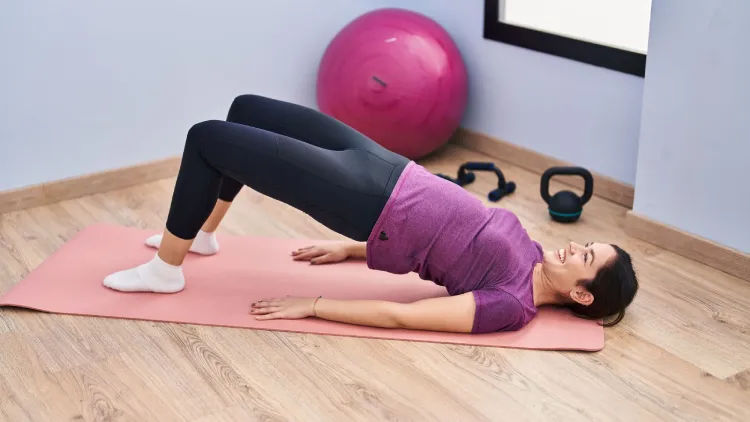
Final Thoughts
The benefits of the clamshell exercise drop way beyond the hip strengthening. This low-impact movement can be highly effective for nearly everyone, because it improves not only joint stability in the pelvis, but also pain relief in the knees and enhanced athletic performance. You can do it with and without a mat, in a bed, and in the gym, and it takes minimal equipment.
This can change the strength and stability of your lower body by merely incorporating clam shells in your daily exercise regimen or rehab program. No matter why you have a fall, need to tighten your hips, or just feel like moving a bit more each day, the clam shell exercise, involving a simple yet reflective power of day-long joints, happens to be a shared option in lifelong joint maintenance.
Frequently Asked Questions
1. What is the frequency of clamshell exercises?
The exercises can be performed through clam shell exercises 3-5 times a week and 2-3 sets of 12-20 reps each side. In the case of rehabilitation, your day-to-day sessions can be recommended by your physical therapist.
2. Are any clamshell exercises helpful in lower back or knee pain?
Yes. Stress put on the lower knee and spinal regions by weak or poorly balanced muscles can be reduced by strengthening the hip stabilisers with clam shells to eliminate pain.
3. Do beginners perform clam shell exercises with nonequipped?
Absolutely. Clam shells are bodyweight, and could be practised on a mat, carpet or in bed. As you get more advanced, you can add a resistive band to make it harder.
4. Which muscles are involved in the exercises of the clamshell
The muscles primarily involved in working on the gluteus medius and minimus, with hip external rotators, are the clam shells. They also work your obliques and induce core stabilisers in providing stability to the pelvis and enhanced movement mechanics.

